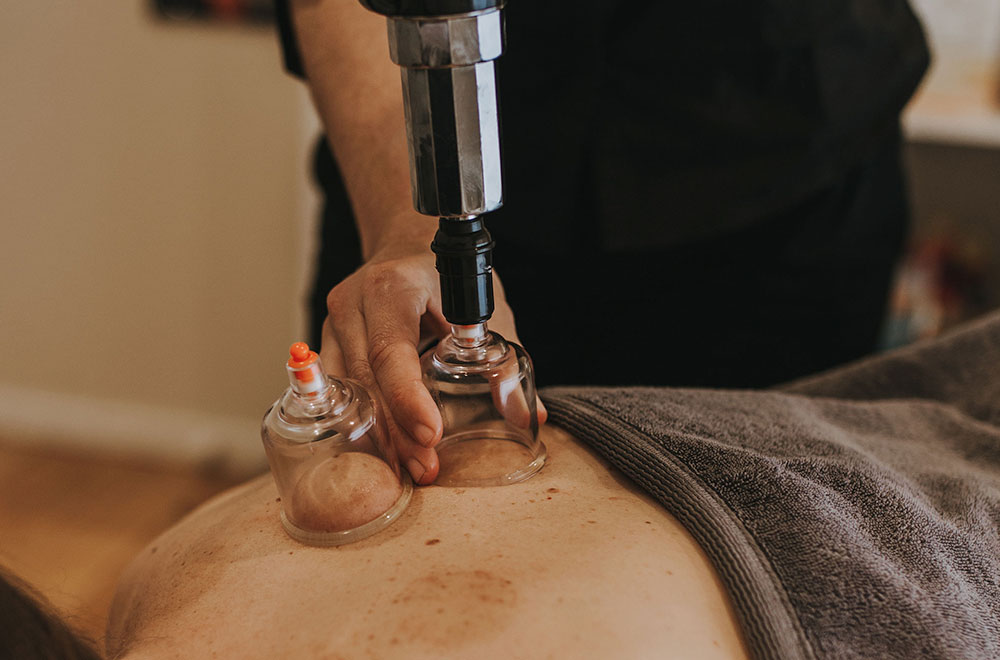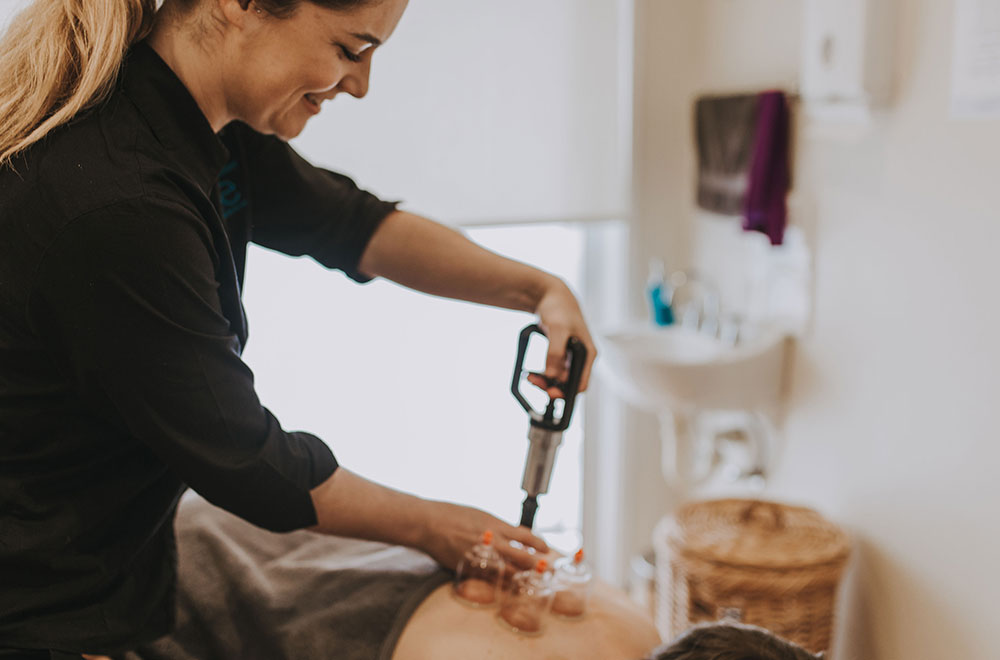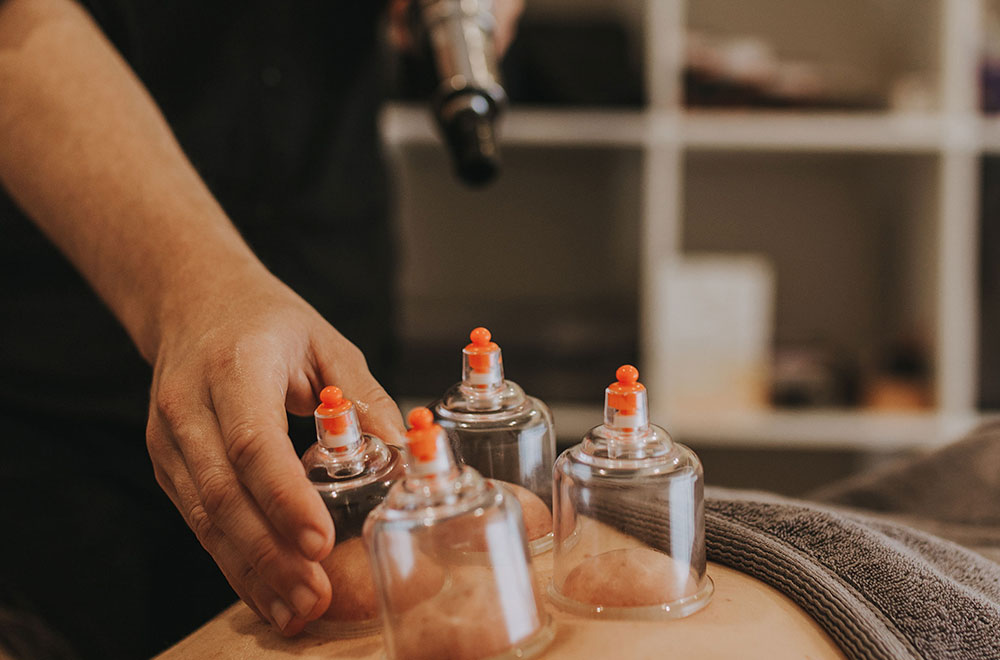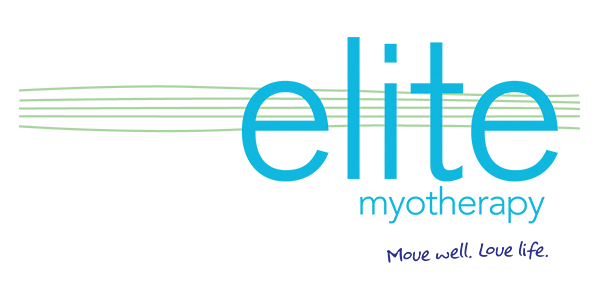
What Is Cupping Therapy?
Cupping Therapy is a distinctive treatment that involves the application of cups to the skin, creating suction that mimics the hand movements of myotherapy.
This unique method elevates the skin slightly away from the underlying muscles, allowing the release of impurities and cellular waste from the muscles and fascia (connective tissue). These toxins are then expelled through the skin’s pores.
Cupping is versatile, recommended for many of the same conditions that lead patients to seek Myotherapy.


How is Cupping Therapy Administered?
A Cupping Therapy session begins with a standard assessment of your body, similar to any Myotherapy appointment. Once we identify the muscles that will benefit from cupping, the cups are set on the skin, creating a pulling sensation. This sensation is noticeable but should not be uncomfortable.
Cupping can be administered in two main ways:
Dynamic Cupping: Here, the cups are slid up and down the treated area. The skin is oiled to allow the cup to glide smoothly, providing a massage-like effect.
Static Cupping: This involves placing the cups on a specific area without moving them. The cups can be left in place for a few minutes or up to 20 minutes, depending on the treatment goal. They can be applied on various body parts, including the spine, shoulders, hips, lower back, and joints, to alleviate inflammation and soreness.
Post-treatment, you may notice redness or a purple discoloration on the skin where the cups were placed. This ‘cup kiss’ is a normal response and indicates an effective session. While it may resemble a bruise, it is usually painless and fades within a few days.
After cupping, it’s important to protect the treated area from wind and sunlight for 24 hours, as the opened pores make the skin more susceptible to external elements.
What does Cupping Therapy treat?
Cupping is a versatile tool in Myotherapy, used to treat various conditions. It is particularly effective in increasing blood flow, lymph circulation, and Qi (energy) to targeted areas. Conditions like poor circulation, back pain, muscle tightness, skin issues, flu, fever, allergies, and anxiety can all benefit from cupping therapy.
While cupping is suitable for most people, those with bleeding disorders, skin ulcers, or edema may need to seek alternative treatments. Additionally, we avoid cupping on the abdominal and lower back regions of pregnant women.
Top-level athletes, including Michael Phelps and Andy Murray, have turned to Cupping Therapy as a natural method to expedite the healing process for muscle soreness or injury, highlighting its effectiveness in sports medicine and overall well-being.








